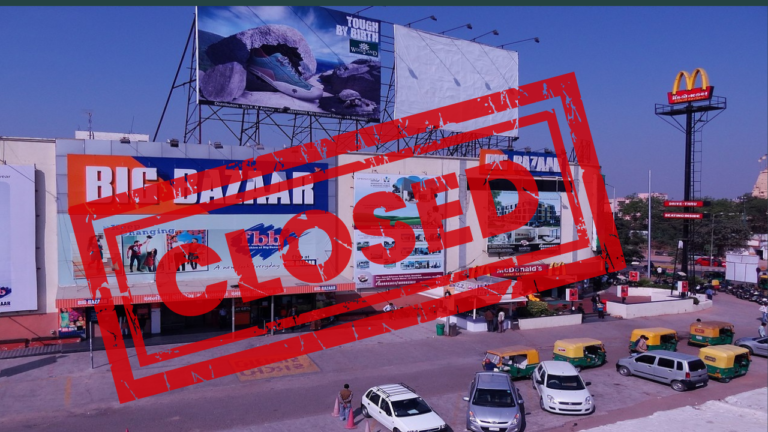Big Bazaar: The Untold Story of India's Retail Giant's Rise and Fall

Big Bazaar, once a household name in India, revolutionized the retail landscape. With its unique approach to shopping, it became a favorite destination for millions. However, the journey was not without challenges. This blog explores the fascinating story of Big Bazaar, its rise to prominence, and the factors that led to its decline.
The Genesis of Big Bazaar
Big Bazaar was established by Kishore Biyani, who had a vision to transform the shopping experience in India. The retail landscape in the late 1990s was dominated by small kirana stores and a few large players. Biyani recognized the potential for a hypermarket model that combined a wide range of products under one roof.
In 2001, the first Big Bazaar store opened in Kolkata, quickly followed by expansions in Bengaluru and Hyderabad. The concept of a one-stop shopping destination resonated with consumers, offering everything from groceries to clothing.
The success of Big Bazaar was attributed to its ability to cater to the diverse needs of Indian consumers. The store layout was designed to mimic a traditional bazaar, creating a familiar environment for shoppers.
Innovative Strategies and Expansion
Big Bazaar’s rise was marked by several innovative strategies. The company focused on providing value for money, appealing to the lower and middle-income segments of the population. Promotional campaigns, like the “Sabse Sastha Din,” attracted huge crowds and created a buzz around the brand.
By 2004, Big Bazaar had expanded its footprint significantly, with over 100 stores across the country. The brand’s unique selling proposition was its ability to offer discounts and deals, making it a popular choice for budget-conscious shoppers.
In addition to its flagship stores, Big Bazaar introduced various formats, including Food Bazaar and e-Zone, catering to different market segments and preferences.
The Cultural Impact
Big Bazaar not only changed the way Indians shopped but also influenced shopping habits nationwide. It introduced the concept of organized retailing, which was a novel idea for many consumers. The store’s layout, with wide aisles and organized sections, provided a pleasant shopping experience.
The brand became synonymous with family shopping trips, as it offered a range of products suitable for all age groups. Big Bazaar also tapped into the festive spirit of India, launching special campaigns during festivals to boost sales.
Challenges on the Horizon
Despite its initial success, Big Bazaar faced several challenges that threatened its dominance. One of the most significant obstacles was the rise of e-commerce. With the advent of platforms like Amazon and Flipkart, consumer behavior began to shift towards online shopping.
In 2015, Big Bazaar attempted to compete by acquiring small grocery store chains like Easy Day. However, the transition to an online platform proved difficult, as the company struggled to adapt to the rapidly changing market dynamics.
The COVID-19 pandemic further exacerbated the challenges faced by Big Bazaar. Lockdowns led to store closures, and the company was unable to meet its financial obligations, resulting in delayed rent payments and layoffs.
The Decline of a Retail Giant
By 2022, Big Bazaar’s financial struggles became evident, culminating in insolvency proceedings. The Future Group, which owned Big Bazaar, faced significant debt and was unable to sustain its operations. The company’s assets were sold off, and many stores were shuttered.
The decline of Big Bazaar serves as a cautionary tale about the fickle nature of retail. What was once a thriving empire became a shadow of its former self, highlighting the importance of innovation and adaptability in a rapidly evolving market.
Lessons Learned from Big Bazaar’s Journey
The story of Big Bazaar offers several valuable lessons for entrepreneurs and businesses alike:
- Adaptability is Key: The retail landscape is continually changing. Businesses must be willing to adapt to new consumer behaviors and market trends.
- Understand Your Customer: Big Bazaar’s success was built on understanding the needs of its target audience. Brands must continuously engage with their customers to stay relevant.
- Embrace Technology: The rise of e-commerce highlighted the need for traditional retailers to embrace technology. A robust online presence is essential for survival in today’s market.
- Financial Management: Sustainable growth requires sound financial management. Businesses must maintain a healthy balance between expansion and fiscal responsibility.
The Future of Retail in India
While Big Bazaar’s decline is a significant event in Indian retail history, it also opens doors for new players and innovative business models. The rise of e-commerce has created opportunities for brands that can effectively blend online and offline experiences.
As consumer preferences continue to evolve, the future of retail in India will likely be characterized by a mix of traditional stores and digital platforms. Retailers that prioritize customer experience, leverage technology, and adapt to changing market conditions will thrive.
Conclusion
Big Bazaar’s journey from a retail revolution to a cautionary tale underscores the importance of innovation and adaptability in business. As we reflect on its impact, it is crucial for current and aspiring entrepreneurs to learn from the successes and failures of this iconic brand. The retail landscape will continue to evolve, and those who can navigate these changes will shape the future of shopping in India.
